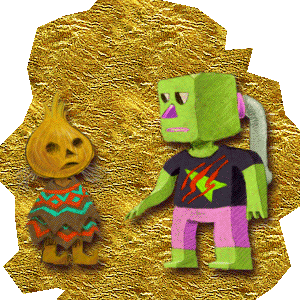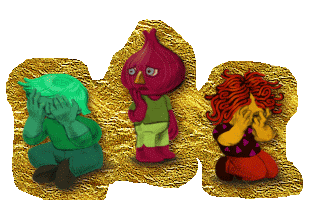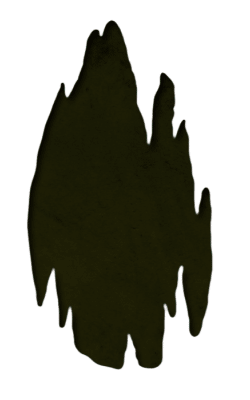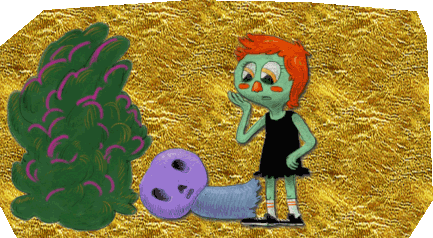
This year was the third year I co-developed and co-taught, along with Meredith “KC” Cosier our “Digital Arts Mash-Up” new media summer camp in DC for the Smithsonian Associates.
The camp was two weeks this year, rather than the customary single week duration of Smithsonian camps, so we and the campers (5th-8th graders) had a lot of extra time to work with, and were able to take things quite a bit further than usual.
Though many of the projects were experimental explorations developed in response to student interest, and weren’t always in and of themselves thoroughly conceptually and theoretically developed, all of our explorations were grounded in the following theoretical foundations:
Olia Lialina’s notion of the Turing Complete User, users “who have the ability to achieve their goals regardless of the primary purpose of an application or device.” We wanted to encourage a kind of pragmatic eclecticism, where we introduced the students to a variety of (free) digital tools, and then encouraged them to push them in new directions, to use and misuse them in new ways, and to combine their use in unorthodox ways.
Douglas Rushkoff’s ethos of Program or be Programmed, wherein peeling back the opaque outer layers of the digital systems we operate within and make use of to understand better the code that underlies them, grants students agency by allowing them to examine digital systems critically as human-made creative products, and to create their own alternative digital systems.
The experimental, sometime ad-hoc nature of the camp meant that I learned a lot, too. I had never worked with any form of 3D modelling, nor with 3D game design, but over the course of this camp did a lot of learning on my feet and walked away having learned something new myself.
Below is a video summary of the camp projects, and below that, a slightly more in-depth description of some of the projects we did, with links to resources.
2016:

Interactive Sound Self-Portraits
Tools: Pixlr, Game Maker, Audacity
Many of the students in this camp had already taken regular and advanced game making camps with us in prior years, and were familiar with Game Maker software. In this project, students used Game Maker to create an interactive artwork, rather than a game. After completing and introductory manipulated self-portrait using Pixlr (a free, web-based Photoshop alternative), we showed students how to record, edit, and generate their own sounds using Audacity, and then load their images and sounds into Game Maker to create a clickable portrait that elicited sounds and expressed other dimensions of themselves.
Download a copy of a Game Maker project file to see how we rigged it all up.
Glitch Art
Tools: Pixlr, Audacity, MS Paint, Windows Movie Maker
Once the students were familiar with audio and image editing, and some of the programs designed for each of those purposes, we showed them how fuzzy the distinctions between the two practices could be when it comes to digital art. Students were shown how both audio and image files could be opened in Notepad to view similarly indecipherable digital code, and then were should how Audacity could be ‘tricked’ into opening an image file, after which audio effects such as echoes and fades could be applied, distorting the image’s code – and the image – in unpredictable ways. This process is typically termed ‘databending’ (which got a kick out of students who were fans of the Avatar cartoon).
Students generated numerous glitch images, combing through them afterwards and curating their favorites. They also saved their images sequentially as they applied more and more distortion to their images, then dumped those images into Windows Movie Maker to create a short looping video of their images’ distortions.
This tutorial served as the starting point for this project, and is a good beginning guide to DataBending.
Creative Coding – ‘Mischievous’ Painting Programs, Sound-Responsive Images, and Interactive 3D Spaces/Models
Tools: Processing
Students learned some basic coding skills and created a few projects outlined in my ‘Creative Code‘ curriculum. These projects included a ‘Mischievous’ Painting Program – a program that lets the user make marks on the screen, but with random or surprising elements included – and a Sound Responsive Face drawn with code that if affected by the volume detected by a microphone.
Later in the camp, after the students learned some basic 3D modelling (see below), students were able to export their models as .obj files, and load them into Processing to create weird interactive works of art using their models. Whereas the prior projects were written from scratch, in this assignment, students were given a barebones Processing file with the code in it for loading in a 3D model, and challenged to decipher the code to load their model in, and add different interactive and visual dimensions to it.
Using a Microsoft Kinect and free KScan 3D software, the students scanned themselves into the computer, and were able to use those meshes in a variety of projects, including this 3D coding one.
2017 Update: Papercraft
Tools: Photoshop, Pixlr
This year, to help translate conceptually between manipulating 2D imagery and 3D objects digitally, the students used their Photoshop/Pixlr skills to make 3D papercraft artifacts.
We looked at contemporary papercraft artists/designers like Faisal Azad, and discussed how the papercraft format allows artists to make 3D sculptures that are easily and democratically distributable around the world. We also drew connections to 3D digital modelling, examining how, for instance Minecraft modders ‘re-skin’ the game’s “Steve” protagonist to change him into a variety of different genders and styles, and how some craftspeople have digitally “unwrapped” 3D game assets into 2D textured templates they then print out to assemble real-world renditions of in-game models.
Students went on a photographic “scavenger hunt” for interesting textures in the Smithsonian Natural History Museum. Back in the lab, we learned how to turn these photos into seamless looping textures in Photoshop, which then could be used to make texture brushes. These textures were then used with a variety of 2D papercraft forms which the students then printed and assembled into sculptural pieces.
Smithsonian Putt-Putt Courses for the National Mall
Tools: Tinker CAD, Smithsonian X3D, Unity , Meshlab (instructor use, 2016), Blender(instructor use, 2017)
The National Mall was getting torn up this summer, meaning students weren’t able to use it for lunch breaks as they usually could. In discussion of ways the Mall could be put to greater use after renovation, the idea of a Putt-Putt course came up. Students were challenged to create 3D designs of Putt-Putt courses either inspired by Smithsonian exhibits and artifacts, or making direct use of the artifacts, in their design.
Toward this end, we introduced students to the Smithsonian X3D project, wherein researchers are creating 3D scans of a variety of Smithsonian artifacts and making them available for free on the web. We discussed how this free resource is not only useful for researchers and historians but for artists who can now appropriate and remix all manner of historic artifacts in a non-destructive way (something done recently in New Media art by the Vapor Wave movement, for example). Because the Smithsonian models were so detailed, the instructors used a free program called Meshlab to lower the polygon count and make them easier for TinkerCAD to import. 2017 update: This year we used a different free 3D program called Blender to compress the 3D meshes – it was a bit faster and more intuitive, though still had a bit of a learning curve.
After students designed their courses, I experimented with dropping them into a Unity project (the very basic “Roll A Ball” tutorial project), and managed to make their holes playable in a very basic way, and the students got to experience their 3D models, which they’d looked at from a schematic distance in TinkerCAD, as inhabitable, navigable, 3D spaces.
Later, I made a bit more progress figuring out how Unity worked, and implemented a Wonderputt-style control scheme, as well as an actual ‘victory’ condition when you get the ball in the hole. You can view a brief video of the project below, or download and try them out yourself!
2016 Smithsonian Putt-Putt – Windows
2016 Smithsonian Putt-Putt – Mac
This year, the students were also able to directly make their interactive putt-putt course by importing their models into a Unity template I had prepared, and placing the course, the ball, and the goal in 3D space. Students learned how to add assets into a 3D game, manipulate elements in a 3D scene, and export an executable game. Since this was a single project, and not a whole Unity camp, the students didn’t do any scripting/coding in Unity for this project.
2016
Transportation Concepts
Tools: Tinker CAD, Thingiverse
After visiting the America: On the Move exhibit at the Smithsonian Museum of American History, students brainstormed and modeled new forms of transportation, focusing on new energy sources, new potential destinations, and new means of traversing spaces.
A Unicorn-Powered Skateboard for Luke to Ride on Rainbows with
A combination recreational vehicle, and giant, ambulatory potato.
Observing and Modeling Organic Forms: Chimeras, Flora, and a Virtual Botanical Garden
Tools: SculptGL, Unity (instructor use), Meshlab (instructor use, 2016), Blender(instructor use, 2017)
Students did observational drawings and took photographic reference during visits to the Smithsonian Natural History Museum and the U.S. Botanical Gardens (at the latter, a corpse flower was blooming, which let us make an art-world connection to Rick Silva’s 3D-modelled corpse flower GIF).
Students used the free, web-based modelling software SculptGL to create their own organic forms using their visual research as reference. Unlike TinkerCAD, SculptGL is designed to simulated modelling a ball of clay, and had tools for applying texture and color to surfaces, as well as preserving symmetry, making it more conducive to organic forms than TinkerCAD.
In addition to screengrabbing their creations, students also exported 3D .obj files to make interactive Processing artworks (see above), and I managed, through some more Unity experimentation (preserving the colors required some very arcane Meshlab work!) to drop their models into a simple Unity file to make an interactive, navigable Virtual Botanic Garden.
Below is a video of the garden, or you can download and move through it yourself:
2016 Virtual Botanic Garden – Win
2016 Virtual Botanic Garden – Mac
2017 Virtual Botanic Garden – Win
2017 Virtual Botanic Garden – Mac
2017 Virtual Botanic Garden – VR Android app
2016
2017 Update: Uncanny Self-Alterations
Tools: SculptGL, KScan 3D (instructor use),
Microsoft Kinect Sensor
This project opened with a discussion of glitched video games models of human bodies which resulted in sometimes funny, sometimes disturbing imagery. The class was introduced to the concept of the “uncanny,” and how it is used in technology (“the uncanny valley”), in psychological theories of fear, and in the practices of artists, including the Surrealists and several contemporary artists. The uncanny is the unsettling/fearful sensation we get when something familiar has been altered – and as the human face is one of the most familiar forms for our mind, its distortion can elicit both horror and uncomfortable laughter.
This phenomenon was discussed from several angles, including its accidental manifestation in glitched games and animations, its intentional deployment by artists to elicit strong feelings from viewers, and the way it may have historically contributed to prejudice against people living with disability or deformity. We looked at the work of several artists who manipulate faces digitally and through analog means to create unnerving imagery, including Lucas Samaras, Sofia Vet, Sleeve Smith, Patricia Piccini, Aron Johnson, Lee Griggs, and Rosa Menkman.
Earlier in the week, we had made 3D scans of all the students’ faces using a Kinect camera and kept these scans on a shared Google Drive for students to experiment with. Students were shown how these models (and, consequently, any model they had made using other tools in class) could be loaded in, distorted, and painted on using SculptGL’s sculpting tools.
Students were challenged to make a particularly unsettling self-portrait (students who found this prompt upsetting could opt for making a particularly funny portrait – discussion highlighted how these types of image often walk the line between laughter and horror), by sculpting, reshaping, and reskinning their own 3D scanned heads. Students generated a series of images, before choosing one to submit to a class-wide poll to determine, subjectively, which images the class found the most “creepy” and the most “hilarious.”
























